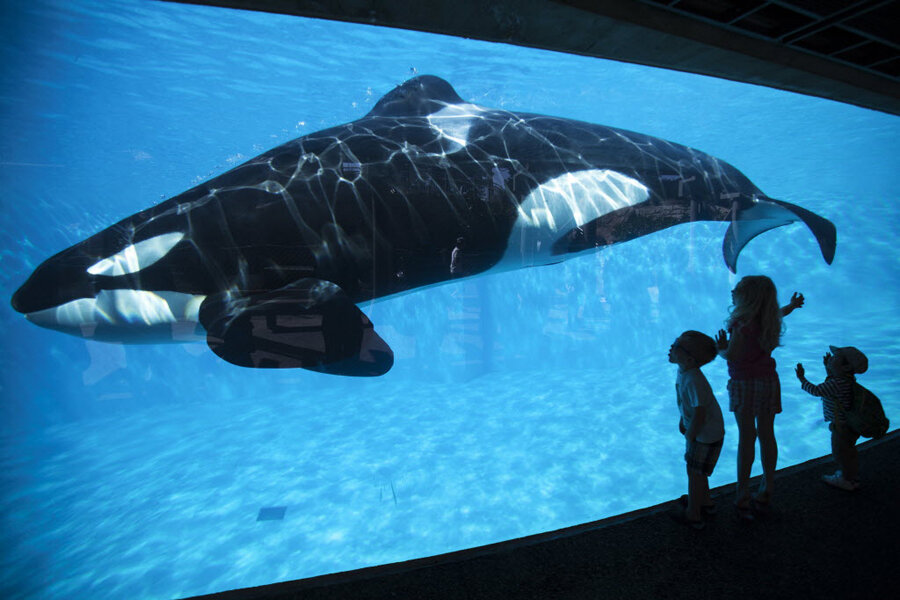Why SeaWorld wants two new tanks for its orcas
Loading...
The California Coastal Commission (CCC) supports a plan by SeaWorld to move ahead with construction on the new Blue World Project at SeaWorld San Diego – but only if certain conditions are met for the safety of the orcas in their care.
The project will include the building of two new orca pools: one with a capacity for 450,000 gallons of water and another for 5.2 million gallons, which SeaWorld says is unprecedented in habitat construction for creatures of this size. The new tanks will replace the current holding pools for the whales. The CCC is a state agency that plans and regulates the use of land and water on California's coast.
The SeaWorld proposal has generated so much interest that the CCC Oct. 8 vote on it will be held at Long Beach Convention & Entertainment Center, in order to accommodate members of the public wanting to attend, Noaki Schwartz, a CCC spokeswoman, told Reuters.
The CCC conditions for supporting the project include that SeaWorld may not increase the number of killer whales above the current total, and they will be protected from construction noise.
Environmentalists are concerned that the size of the proposed tanks may provide SeaWorld with the leeway to capture more orcas from the wild, something the company has not done since the 1980s.
"They could breed all the orcas they want with this facility and ship them all over the world,” Sara Wan, a former commissioner who now works as a consultant for the Animal Defense Legal Fund, told ABCNews.
SeaWorld has been beset by critics of its orca program since the 2013 release of the documentary film Blackfish, which claimed the park mistreats its whales. The film argued that the conditions Tilikum, a massive orca bull whale, were placed in while in captivity caused the creature great stress and resulted in his aggressive behavior towards his human handlers. That behavior, according to the film, was what caused the deaths of three people, including one of his former trainers, Dawn Brancheau, in 2010.
Speaking about that incident, Jack Hanna, director emeritus of the Columbus Zoo and Aquarium in Ohio, told CNN, “What happened is something that happens; it happens in our line of work."
After the film’s release, the company announced a $15.9 million loss in ticket sales, although the SeaWorld’s CEO, James Atchison, blamed those figures on poor weather and higher ticket prices, Bloomberg reported. SeaWorld also released several public statements, including an official webpage, condemning the movie for being “propaganda, not documentary.”
The Blue World Project may be part of a larger vision to help address SeaWorld’s care of orcas. On the project’s official website, its stated intention is to “[Advance] the global understanding of killer whales, [educate] and [inspire] conservation efforts to protect those in the wild.”
Artistic renderings on the website showcase a more natural habitat for captive orcas to swim in, including life-like shorelines and reefs; attendees would be able to view the killer whales from multiple directions. If approved, construction on the project is scheduled to begin in 2017.







